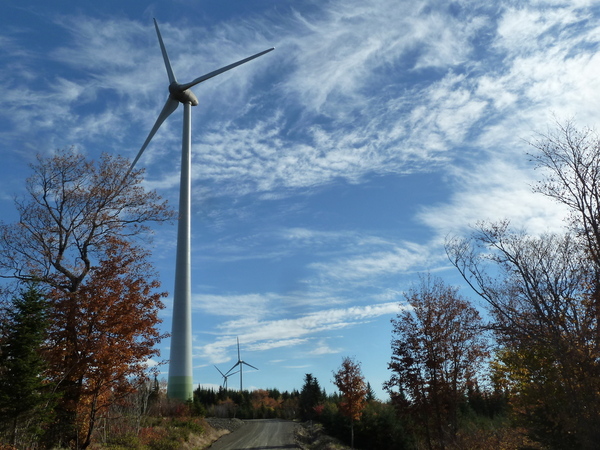News Release from windfair.net
Wind Industry Profile of
Canada's Wind Industry Continues Growth
At the 2008 Climate Protection Index, Canada still ranked 53 out of 56 countries under investigation. Only Saudi Arabia, the US and Australia still lag behind the North American's carbon dioxide emissions. In December 2011, the country even declared its withdrawal from the Kyoto Protocol shortly after the UN climate change conference in Durban. With the Athabasca oil sands in northern Alberta, Canada has the world's largest reserves of oil only second to Saudi Arabia. It is therefore no wonder that renewable energies have traditionally had a difficult stand and the expansion is only slowly growing.
Last year, however, 702 megawatts of wind energy were installed, increasing the total capacity to 11,898 MW. As a result, wind energ now has a share of 6 per cent in the country's electricity mix, and it can supply 3 million households of the almost 36 million inhabitants of the country. Although these figures are low compared to Europe, where some of the large offshore wind farms alone can supply more than one million housholds, they are still a success.
Of the 21 new wind energy projects completed last year, 16 are owned by aboriginal or local communities, or municipal governments. “The fact that the vast majority of new wind energy projects built in Canada in 2016 had some form of local ownership demonstrates the value of wind not only as a driver of economic growth, but also as a source of local jobs and revenue in communities right across the country,” emphasizes Robert Hornung, President of the Canadian wind energy association CanWEA.

Image: CanWEA
In addition to natural gas, wind energy has now become the most favorable source of energy and has been the largest source of new electricity generation since 2005. Between 2012 and 2016, Canada's installed wind power capacity grew by an average of 18 percent per year (1,327 MW).
The association expects that in 2017 the country will install around 700 MW of wind energy capacity. New measures to expand wind energy in Alberta and Saskatchewan in 2017, coupled with a renewed focus on measures to reduce CO2 emissions, make the growth outlook for wind power promising for the coming years.
“More wind energy has been built in Canada in the last 11 years than any other form of electricity generation, and for good reason,” said Hornung. “Costs for wind energy have fallen dramatically over the past seven years, making it one of Canada’s two most cost-competitive sources of new electricity supply. And unlike natural gas, wind energy is not impacted by carbon prices or commodity price fluctuations, meaning that wind energy will only become more affordable over time."
Good prospects, therefore, to invest in Canada's wind industry.
- Author:
- Katrin Radtke
- Email:
- kr@windfair.net
- Keywords:
- Canada, climate protection, CO2, wind energy

























